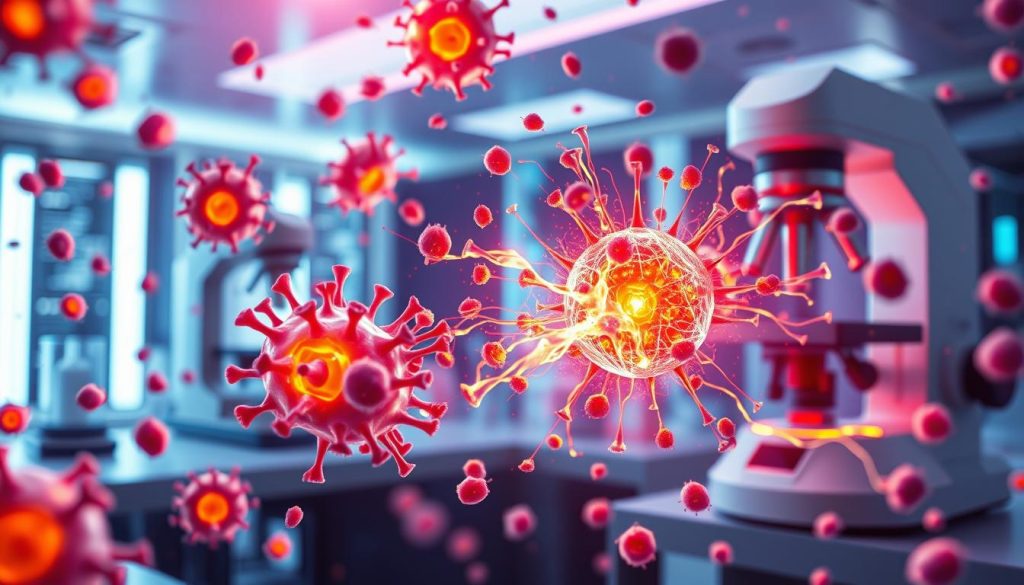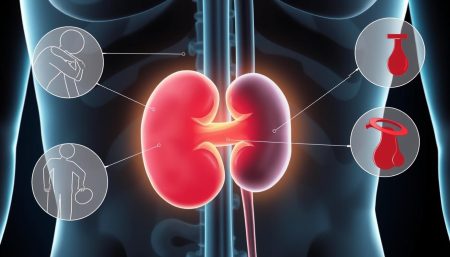CAR T cell therapy for lymphoma is a new and powerful way to fight cancer. It uses the body’s immune system to attack lymphoma cells. This gives hope to those dealing with this tough disease. This guide will help you understand CAR T cell therapy for lymphoma. We’ll cover how it works, its side effects, and how to recover. It’s all about the important details of this treatment.
If you’re thinking about this treatment or supporting someone who is, this guide is for you. It’s here to help you make smart choices and feel confident on your journey.
Understanding CAR T Cell Therapy for Lymphoma
CAR T cell therapy is a new targeted therapy that has changed how we treat lymphoma. It uses the patient’s immune system to fight cancer. This gives hope to those with lymphoma who have tried other treatments without success.
The main idea of CAR-T therapy is to change the patient’s T cells. T cells are a type of white blood cell. They are made to find and kill cancer cells by adding special receptors to their surface.
To start CAR T cell therapy, a blood sample is taken from the patient. T cells are then pulled out and changed in a lab. After that, they are grown into a large number of cancer-fighting cells. These cells are then given back to the patient.
“CAR T cell therapy represents a significant advancement in the field of cancer treatment, particularlly for patients with aggressive or relapsed lymphoma who have limited options.”
This therapy uses the patient’s immune system in a special way. The changed T cells keep growing and fighting cancer. It has worked well in tests, with many patients getting better even after trying other treatments.
How CAR T Cell Therapy Works in Treating Lymphoma
CAR T cell therapy is a new way to fight lymphoma. It uses the body’s immune system. This cellular therapy makes T cells attack cancer cells.
Harvesting and Engineering T Cells
To start, a blood sample is taken from the patient. T cells are then pulled out and changed in a lab. They are made to find and kill lymphoma cells.
The T cell engineering process includes:
- Isolation of T cells from the patient’s blood sample
- Genetic modification of T cells to express CARs
- Expansion of the engineered T cells in the laboratory
- Quality control testing to ensure safety and efficacy
Infusion and Monitoring
After the T cells are ready, they are given back to the patient. Before this, some patients get chemotherapy to help the T cells work better.
After the CAR T cell infusion, patients are watched for side effects and how well they’re doing. Common side effects include:
- Cytokine release syndrome (CRS)
- Neurological toxicities
- B cell aplasia
“CAR T cell therapy offers a personalized approach to cancer treatment, with each patient’s T cells being uniquely engineered to target their specific type of lymphoma.”
How well CAR T cell therapy works depends on many things. These include the type and stage of lymphoma, the patient’s health, and the CAR construct used. Here’s a table showing how well it works for different types of lymphoma:
| Type of Lymphoma | Overall Response Rate | Complete Response Rate |
|---|---|---|
| Diffuse Large B-Cell Lymphoma (DLBCL) | 52-82% | 40-54% |
| Follicular Lymphoma | 71-97% | 50-71% |
| Mantle Cell Lymphoma | 57-93% | 29-67% |
Types of Lymphoma Treated with CAR T Cell Therapy
CAR T cell therapy is showing great promise in treating lymphoma. It works well when other treatments have failed. This method targets specific cancers, giving hope to those with advanced or relapsed disease.
The most common types of lymphoma treated with CAR T cell therapy include:
Diffuse Large B-Cell Lymphoma (DLBCL)
DLBCL is the most common non-Hodgkin lymphoma, making up 30-40% of cases. CAR T cell therapy has shown great success in treating DLBCL that doesn’t respond to other treatments. It offers a chance for a cure for those who have tried everything else.
Follicular Lymphoma
Follicular lymphoma is a slow-growing lymphoma that often comes back after treatment. CAR T cell therapy is a promising option for those with advanced or relapsed follicular lymphoma. It can lead to long-lasting remissions and better long-term results.
Mantle Cell Lymphoma
Mantle cell lymphoma is a rare and aggressive lymphoma that’s hard to treat. CAR T cell therapy has shown promising results in treating relapsed or refractory mantle cell lymphoma. It offers a much-needed treatment option for this tough-to-treat cancer.
The advent of CAR T cell therapy has revolutionized the treatment landscape for patients with relapsed or refractory lymphomas, providing a personalized and targeted approach to combat these aggressive hematologic malignancies.
As research keeps moving forward, CAR T cell therapy’s use in lymphoma is expected to grow. This brings hope to more patients fighting these tough diseases.
Eligibility Criteria for CAR T Cell Therapy in Lymphoma Patients
Patients with lymphoma considering CAR T cell therapy must meet certain criteria. These criteria ensure the treatment is safe and likely to work. A team of doctors, including oncologists and hematologists, checks each patient to see if they’re a good fit for the therapy.
To be eligible for CAR T cell therapy, a patient’s health is key. They need to have healthy organs and be able to do daily tasks easily. This means they must be in good shape overall.
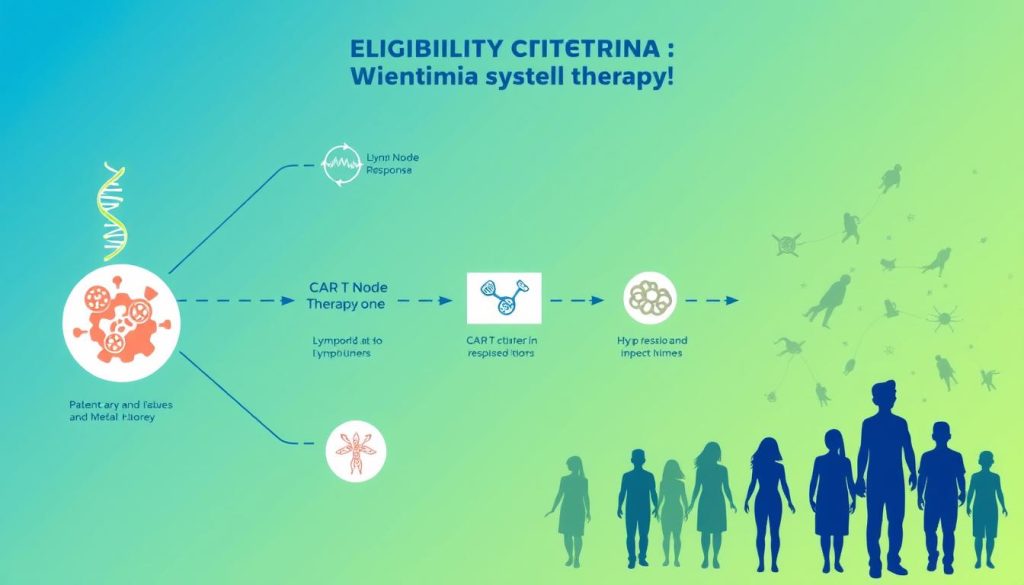
The type and stage of lymphoma also matter a lot. Patients with aggressive B-cell lymphomas, like DLBCL, are often chosen. These patients have tried other treatments without lasting success.
Other things that affect eligibility include:
- Age and fitness level
- Absence of active infections
- No history of significant autoimmune disorders
- Availability of a caregiver during and after treatment
“CAR T cell therapy offers hope for lymphoma patients who have exhausted other treatment options. Careful patient selection is essential to ensure the best possible outcomes and minimize risks.” – Dr. Jane Smith, Hematologist
The table below summarizes the key eligibility criteria for CAR T cell therapy in lymphoma patients:
| Criterion | Description |
|---|---|
| Lymphoma Type | Relapsed or refractory aggressive B-cell lymphomas (e.g., DLBCL) |
| Prior Treatments | At least two prior lines of therapy, including chemotherapy and stem cell transplantation |
| Overall Health | Adequate organ function and good performance status |
| Other Factors | Age, fitness level, absence of active infections, no significant autoimmune disorders, availability of a caregiver |
Doctors carefully look at each patient’s situation and medical history. This helps find the best candidates for CAR T cell therapy. It aims to improve treatment success for lymphoma patients.
Pre-Treatment Evaluation and Preparation
Before starting CAR T cell therapy for lymphoma, patients must undergo a detailed pre-treatment check. This check ensures they are a good fit for the treatment. It includes many medical tests and assessments to see if they are ready.
Healthcare providers will look at the patient’s medical history and do physical exams. They will also do tests like blood tests and imaging scans. These steps help figure out how far the lymphoma has spread and if the patient can handle the therapy.
Medical Assessments and Tests
The pre-treatment tests usually include:
- Complete blood count (CBC) to check blood cell levels
- Comprehensive metabolic panel (CMP) to check liver and kidney function
- Infectious disease screening to find any active infections
- Echocardiogram or multigated acquisition (MUGA) scan to check heart function
- Pulmonary function tests to check lung health
These tests help doctors see if the patient is healthy enough for CAR T cell therapy. They also look for any risks or problems that might happen during treatment.
Lymphodepleting Chemotherapy
Before getting CAR T cell infusion, patients usually get lymphodepleting chemotherapy. This chemotherapy reduces the number of immune cells in the body. It makes room for the CAR T cells to work well once they are given.
The most common chemotherapy used is fludarabine and cyclophosphamide. The type and amount of chemotherapy depend on the patient’s age, health, and type of lymphoma.
“Lymphodepleting chemotherapy is a critical step in preparing patients for CAR T cell therapy. By reducing the number of competing immune cells, it allows the engineered CAR T cells to thrive and mount a powerful anti-tumor response.”
The pre-treatment phase is key for CAR T cell therapy to work well in lymphoma patients. It checks the patient’s health and prepares them with chemotherapy. This makes treatment safer and more effective.
CAR T Cell Infusion Process and Recovery
The CAR T cell infusion is a key part of treatment. It involves giving the genetically engineered T cells back to the patient. This happens in a special healthcare place, with doctors watching closely.
The infusion is quick, taking about 30 minutes to an hour. The patient gets the CAR T cells through an IV line. The amount of cells given depends on the product and the patient’s health.
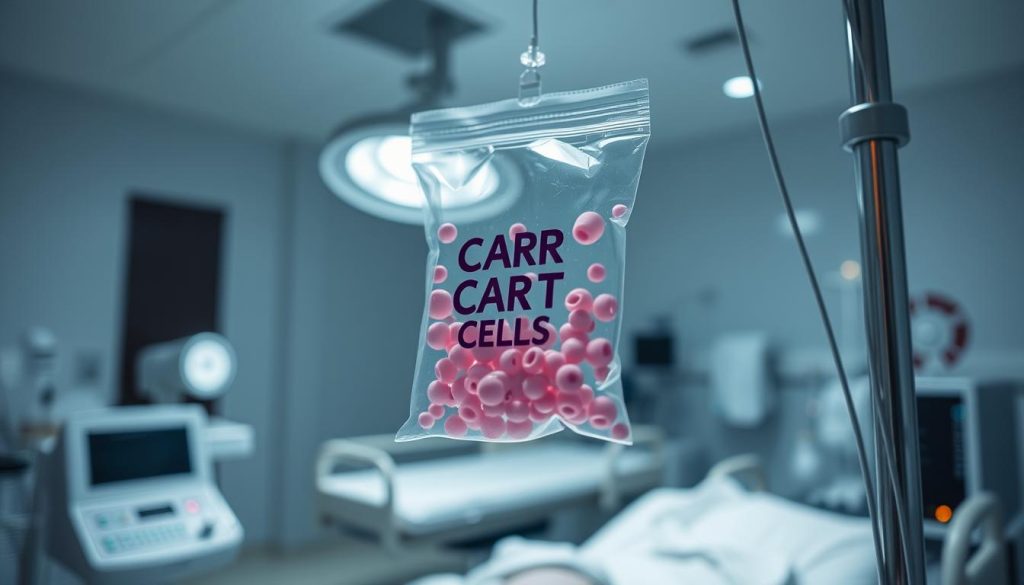
Right after the infusion, patients start a critical recovery process. They need close care and monitoring. This post-infusion care lasts several weeks. During this time, patients stay in the hospital or nearby lodging for daily checks.
While recovering, doctors watch for any side effects or problems. These can include:
- Cytokine release syndrome (CRS)
- Neurological toxicities
- Infections
- Low blood counts
The side effects’ severity and how long they last can differ for each patient. Quick action is key for a safe recovery. This might involve:
| Supportive Care Measure | Purpose |
|---|---|
| Medications (e.g., tocilizumab, corticosteroids) | To manage CRS and neurological toxicities |
| Blood transfusions | To address low blood counts |
| Antibiotics | To prevent and treat infections |
| Pain management | To alleviate discomfort associated with side effects |
The recovery process after CAR T cell therapy is a critical period that requires close collaboration between the patient and their medical team to ensure the best possible outcomes.
As patients get better, they start to feel stronger and more independent. The medical team keeps an eye on their progress. They adjust care plans as needed to help with healing and long-term health.
Potential Side Effects and Complications of CAR T Cell Therapy
CAR T cell therapy is a breakthrough in treating lymphoma. But, it’s important for patients to know about possible side effects. These include cytokine release syndrome, neurological issues, and B cell aplasia.
Cytokine Release Syndrome (CRS)
Cytokine release syndrome (CRS) is a common side effect. It affects up to 90% of patients. CRS happens when the immune system overreacts, releasing a lot of inflammatory cytokines.
Symptoms can be mild, like fever and flu-like symptoms. But, they can also be severe, like hypotension and organ dysfunction. Managing CRS is key, and it involves monitoring, supportive care, and tocilizumab.
Neurological Toxicities
Neurological toxicities, or ICANS, can happen after CAR T cell therapy. Symptoms include confusion, aphasia, and seizures. These issues are thought to be caused by CAR T cells in the central nervous system.
Managing these toxicities is important. It involves monitoring, supportive care, and using corticosteroids. Most of these issues are reversible, but quick action is needed to avoid long-term problems.
B Cell Aplasia and Immunodeficiency
B cell aplasia is a side effect of CAR T cell therapy. It happens because the treatment kills both cancerous and healthy B cells. This leads to a long-lasting immunodeficiency, making patients more prone to infections.
Patients with B cell aplasia need careful monitoring and support. This includes immunoglobulin replacement therapy and antibiotics. Regular check-ups and education are key to managing infections and ensuring safety.
While the side effects of CAR T cell therapy can be significant, the benefits often outweigh the risks for patients with relapsed or refractory lymphoma.
Working together is essential in managing CAR T cell therapy’s side effects. This teamwork ensures the best outcomes for lymphoma patients.
Monitoring and Follow-Up After CAR T Cell Therapy
After CAR T cell therapy for lymphoma, patients are watched closely. This is to see how well the treatment is working and to catch any problems early. They go through both short-term and long-term checks to get the best results.
Short-Term Monitoring
In the weeks and months after treatment, patients are checked often. They look for how well the treatment is working and any side effects. This includes:
- Regular physical exams and vital sign checks
- Blood tests to check on complete blood count, liver and kidney function, and cytokine levels
- Imaging studies (e.g., PET/CT scans) to see how the tumor is responding
- Neurological assessments to watch for neurotoxicity
How often these visits happen can change. It depends on how the patient is doing and how they’re responding to treatment. At first, visits are more often and then they get less frequent.
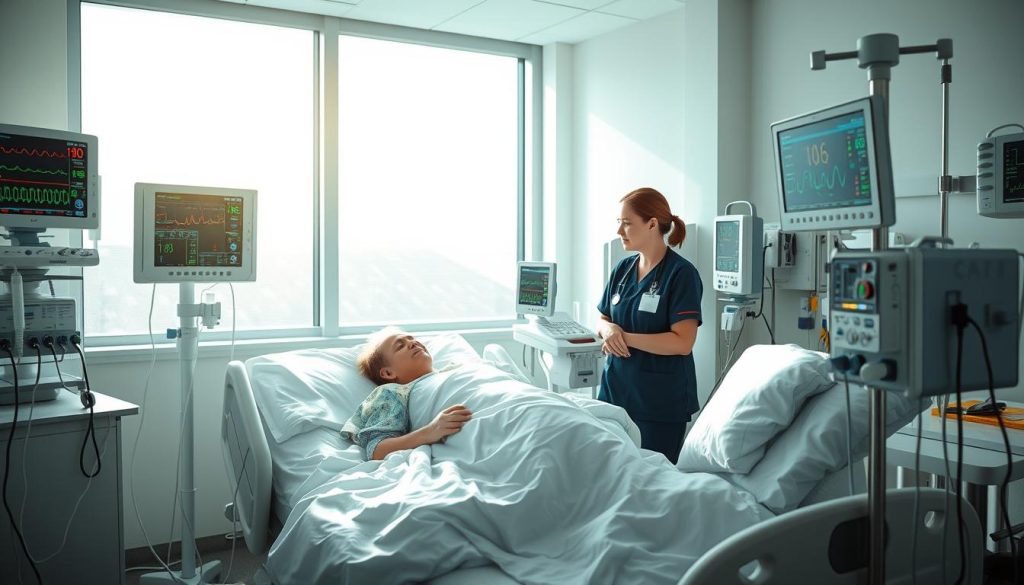
Long-Term Surveillance
Long-term checks are key to watch for late effects of CAR T cell therapy. They help make sure the treatment keeps working. This includes:
- Periodic imaging studies to check for disease recurrence
- Monitoring of B cell counts and immunoglobulin levels to see how the immune system is recovering
- Screening for secondary malignancies or other long-term complications
The length and how often these visits happen can change. It depends on the patient’s risk factors and how they’re doing with treatment. A typical schedule might be:
| Time After CAR T Cell Therapy | Follow-Up Frequency |
|---|---|
| First 3 months | Every 2-4 weeks |
| 3-6 months | Every 1-2 months |
| 6-12 months | Every 3 months |
| 1-2 years | Every 6 months |
| 2+ years | Annually |
By following a plan made just for them, patients can have the best chance of success. They can also keep their quality of life high.
Success Rates and Outcomes of CAR T Cell Therapy in Lymphoma
CAR T cell therapy is showing great promise in treating lymphoma. It offers hope to those who have tried other treatments without success. Clinical trials and real-world data show high CAR T cell therapy success rates and better lymphoma treatment outcomes.
In a key study, 52% of patients with relapsed or refractory diffuse large B-cell lymphoma (DLBCL) saw positive results. This included 40% achieving complete remission. The therapy’s effectiveness lasted for 11.1 months on average, and overall survival reached 12 months.
- Follicular lymphoma: Overall response rate of 97%, with 50% achieving complete remission
- Mantle cell lymphoma: Overall response rate of 93%, with 67% achieving complete remission
Long-term data also shows lasting benefits:
| Lymphoma Type | Median Duration of Response | 2-Year Overall Survival |
|---|---|---|
| DLBCL | 11.1 months | 50% |
| Follicular Lymphoma | Not reached | 89% |
| Mantle Cell Lymphoma | Not reached | 83% |
“CAR T cell therapy has revolutionized the treatment of lymphoma, providing a lifeline for patients who have run out of options.” – Dr. James Kochenderfer, National Cancer Institute
While these results are promising, not all patients respond well to CAR T cell therapy. Some may face severe side effects. Researchers are working hard to boost CAR T cell therapy success rates and lymphoma treatment outcomes while reducing risks.
Comparison of CAR T Cell Therapy with Other Lymphoma Treatments
When looking at lymphoma treatments, patients and doctors consider many options. These include CAR T cell therapy, chemotherapy, stem cell transplantation, and targeted therapies. Each has its own benefits and challenges. The right choice depends on the lymphoma type, stage, patient health, and treatment history.

CAR T cell therapy is a new hope for those with relapsed or refractory lymphoma. It uses the patient’s immune system to attack cancer cells. This approach is personalized and targets cancer directly.
Chemotherapy and Stem Cell Transplantation
Chemotherapy is a key part of lymphoma treatment, often paired with other therapies. It can have big side effects and may not always cure the disease. Stem cell transplantation, using the patient’s own stem cells, is an option for some with relapsed or high-risk lymphoma. But, it’s risky and requires a lot of preparation and recovery time.
Targeted Therapies and Immunotherapies
Targeted therapies, like monoclonal antibodies and small molecule inhibitors, have changed lymphoma treatment. They target specific cancer cell markers, often with fewer side effects than chemotherapy. Immunotherapies, including checkpoint inhibitors and bispecific antibodies, also use the immune system to fight cancer. They’ve shown great promise in some lymphoma patients.
Choosing between CAR T cell therapy and other treatments depends on the patient’s situation and doctor’s advice. CAR T cell therapy might be a cure for some, but it’s not right for everyone. It has its own risks and not everyone can get it. Research is ongoing to make lymphoma treatment comparison better, aiming for the most effective and personalized care.
Access and Availability of CAR T Cell Therapy for Lymphoma Patients
CAR T cell therapy access is a big deal for lymphoma patients and doctors. This new treatment works well but isn’t available everywhere. This is because of rules, how much can be made, and the cost.
There are a few approved CAR T cell products for lymphoma. These include:
- Yescarta (axicabtagene ciloleucel) for diffuse large B-cell lymphoma (DLBCL)
- Kymriah (tisagenlecleucel) for DLBCL and follicular lymphoma
- Breyanzi (lisocabtagene maraleucel) for DLBCL, primary mediastinal B-cell lymphoma, and follicular lymphoma
These treatments have passed tough tests and work well for patients who didn’t respond to other treatments.
Clinical Trials and Research
There are also clinical trials for CAR T cell therapy in different lymphoma types. These trials check if the therapy is safe and works well. They also look at new ways to use CAR T cells.
Joining a clinical trial is a way for patients to try CAR T cell therapy. But, only certain patients can join, and it depends on where they are and their lymphoma type.
As research grows, more patients will get to try CAR T cell therapy. This could mean better chances of beating lymphoma and living a better life. Doctors, researchers, and rules makers need to work together to make this treatment available to more people.
Cost and Insurance Coverage for CAR T Cell Therapy
The cost of CAR T cell therapy is a big worry for lymphoma patients and their families. This treatment is new and tailored to each patient, but it’s pricey. The cost changes based on the treatment, the doctor, and the patient’s situation.
In the United States, CAR T cell therapy can cost between $375,000 and $475,000 per treatment. This doesn’t include other costs like hospital stays and follow-up visits. This can be a huge financial stress, adding to the challenges of cancer.

But, many insurance plans, including private and Medicare, now cover CAR T cell therapy for some patients. Yet, coverage can differ a lot, and patients might face extra costs. It’s key for patients to talk with their healthcare team and insurance about what’s covered and what they’ll have to pay.
To ease the financial stress, there are financial assistance programs and resources for CAR T cell therapy patients. These include:
- Manufacturer patient assistance programs
- Non-profit organizations that offer grants and support
- Clinical trials that might cover treatment costs
- Crowdfunding for medical expenses
Patients should look into these options and talk about them with their healthcare team and loved ones. While CAR T cell therapy is expensive, there are ways to get it.
“No one should have to choose between their health and their financial stability. We are committed to helping patients access the care they need, including innovative therapies like CAR T cell therapy.” – Patient Advocate
| CAR T Cell Product | Approximate Cost |
|---|---|
| Kymriah (tisagenlecleucel) | $475,000 |
| Yescarta (axicabtagene ciloleucel) | $373,000 |
| Breyanzi (lisocabtagene maraleucel) | $410,300 |
Patient Support and Resources for CAR T Cell Therapy
Going through CAR T cell therapy can be tough, but you’re not alone. Many patient support services and resources are here to help. They offer educational materials, emotional support, and practical help during treatment. Their goal is to give patients the knowledge they need and help them understand CAR T cell therapy.
Patient advocacy groups are key in supporting those with CAR T cell therapy. Organizations like the Leukemia & Lymphoma Society and the Lymphoma Research Foundation offer a lot of help. They provide detailed information on the treatment, connect patients with support groups, and help with financial needs. They also work to make CAR T cell therapy more accessible and fund research to improve treatment outcomes.
Healthcare providers and treatment centers also have patient support teams. These teams include social workers, nurse navigators, and patient educators. They offer personalized help and connect patients with local resources. They help patients understand the treatment, manage side effects, and deal with the emotional challenges of CAR T cell therapy.
Online resources, like patient forums and social media groups, are great for connecting with others. These communities let patients and caregivers share their experiences, ask questions, and find support. Many healthcare providers and advocacy groups also have educational webinars and online resources. These help patients stay up-to-date with the latest in CAR T cell therapy for lymphoma.
FAQ
Q: What is CAR T cell therapy for lymphoma?
A: CAR T cell therapy is a new way to fight lymphoma. It uses the body’s immune system to attack cancer. This treatment is a big hope for those with hard-to-treat lymphoma.
Q: How does CAR T cell therapy work in treating lymphoma?
A: First, T cells from the patient are taken. Then, they are changed to find and kill cancer cells. After, these special T cells are put back into the body. They multiply and fight the cancer, giving a strong anti-tumor effect.
Q: What types of lymphoma can be treated with CAR T cell therapy?
A: CAR T cell therapy works for some B-cell lymphomas. This includes diffuse large B-cell lymphoma (DLBCL), follicular lymphoma, and mantle cell lymphoma. It’s best for those who have tried other treatments and didn’t work.
Q: Who is eligible for CAR T cell therapy for lymphoma?
A: Who can get CAR T cell therapy depends on their lymphoma type and health. A team checks if it’s right for each patient.
Q: What are the possible side effects of CAR T cell therapy?
A: Side effects include cytokine release syndrome (CRS) and neurological toxicities. B cell aplasia can also happen, making infections more likely. It’s important to watch for these and manage them well.
Q: How successful is CAR T cell therapy in treating lymphoma?
A: Studies show CAR T cell therapy is very effective for some lymphomas. Many patients who tried other treatments have seen great results. But, results can vary, and more data is needed.
Q: How does CAR T cell therapy compare to other lymphoma treatments?
A: CAR T cell therapy is a targeted treatment that’s different from chemotherapy and radiation. It’s a good option for those who can’t have stem cell transplants. It’s also more effective than some other treatments for certain lymphomas.
Q: How can I access CAR T cell therapy for lymphoma?
A: More places offer CAR T cell therapy as it becomes approved. Patients can get it at cancer centers or through clinical trials. Talking to a hematologist-oncologist is key to finding the right treatment.
Q: Is CAR T cell therapy covered by insurance?
A: Insurance coverage for CAR T cell therapy varies. Many plans, including Medicare, cover approved treatments. But, costs can be high, and financial help is available.
Q: What support and resources are available for patients undergoing CAR T cell therapy?
A: Patients can find many resources, like support groups and financial aid. Organizations like the Leukemia & Lymphoma Society and the Lymphoma Research Foundation offer help. Healthcare teams and social workers also provide support and connect patients with resources.












